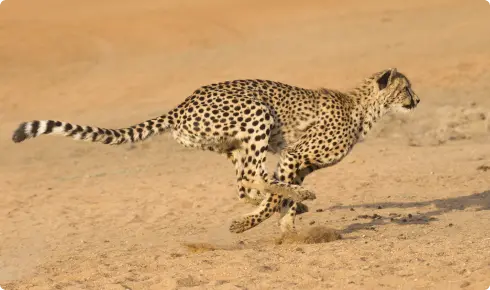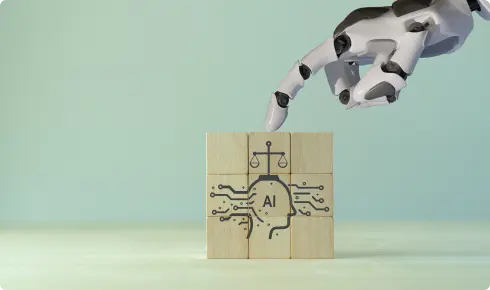In a culture obsessed with speed, slowing down is a vital skill for clarity, connection, and meaning.
KEY POINTS
- True productivity begins with calm attention.
- Neuroscience and ancient wisdom both offer lessons about focus and fulfillment.
- Slowing down is a way to reclaim clarity and connection.
“I feel the need. The need … for speed!” — Maverick, Top Gun
Don’t we all, Maverick. Don’t we all.
The world seems to be operating at warp speed. And for many of us, the challenge of keeping up can feel overwhelming. There’s too much to be done, and it all needs to be done yesterday. The days are too short, and the nights barely exist. Alerts, messages, deadlines, decisions. Screens blinking. Phones pinging. The only way to keep up is to run faster – and even if you do, you still fall behind.
The Myth of Multitasking
When we have a lot to do and not enough time to do it, a natural response is to multitask. We quickly reply to emails while we’re preparing a presentation. We shoot off a message on WhatsApp while juggling a Zoom call. We listen to a podcast while skimming an article we need to read for a meeting later in the day. This lets us tick off multiple items on our to-do list simultaneously, and it feels like we are winning back more time by doing more at once.
But we’re mistaken.
Research consistently tells us that multitasking significantly reduces our efficiency. For example, a 2011 study found that people “who are forced to multitask perform significantly worse than those forced to work sequentially.”
This makes sense. The brain can only process a limited number of stimuli at once. For instance, working memory – the number of items we can hold in our minds while working on a task – is famously limited. While researchers used to think we could handle around 7 items, the consensus now is that the number is actually just 3-5. When we keep giving our brains more stimuli and more things to remember, the result is that our cognitive performance declines.
Slowing Down to Speed Up
When we try to do too much all at once, or try to do too much too quickly, we don’t do anything well. And, curiously, we do it more slowly, too.
We need what we might call the practice of “slow attention” – the practice of focusing fully on one task, one moment, one breath at a time. It’s the practice of being fully present for what we do.
When we’re faced with overwhelming demands, with alerts and pings, with multiple competing claims on our energy and attention, the best and most efficient way of responding is to slow down. Instead of trying to do 10 things at once, it’s better to do one thing at a time and work sequentially through our list of tasks.
As I discussed in Buddha Had It Right: Relax the Mind and Productivity Will Follow, ancient mindfulness practices, particularly from the Buddhist tradition, have long emphasized that calm is what unlocks true clarity. The Buddha described the “monkey mind” as constantly distracted and unsettled. His solution wasn’t to outrace it, but to relax it. When the mind is calm, productivity increases.
Earlier, I quoted from the movie Top Gun. In the film, Maverick is an elite Navy fighter pilot. And as it happens, there’s another famous saying attributed to the Navy SEALS, this one real: Slow is smooth, and smooth is fast.
If you want to go faster, you need to slow down.
Reclaiming Our Lives, and Ourselves
So far, I’ve talked about the efficiency benefits of slowing down. They’re real, and they’re substantial: You really will get much more done if you do it more slowly.
But there’s something much more important at stake: our humanity.
When we race through life, we lose more than IQ points or cognitive performance. We lose our connection to ourselves. Instead of being present to ourselves, our feelings, and our experience, we drown in a sea of distractions and deadlines.
When we hurry through our day, we live reactively rather than intentionally. We let the world dictate its agenda to us instead of choosing for ourselves how we want to spend the very limited time we have.
We need to slow down to be present. And being present – truly present, not performatively present – transforms how we relate to ourselves and others. It allows for deeper listening, authentic engagement, and greater empathy. We stop performing and start connecting.
5 Practices to Go Slower
Slowing down is hard. Our culture equates busyness with value, and many of us have unfortunately learned to equate our worth with our performance. Further, the fear of falling behind, of not doing enough, drives us to keep going, even when our mental health is suffering.
But slowing down is transformative. And while it’s hard, it is also a skill each of us can build, one choice at a time.
Here are five choices you can make that will immediately help you to slow down:
- Pause with Purpose. Take 5 minutes a day to breathe deeply or scan your body. This helps move your nervous system out of fight-or-flight mode and into calm awareness.
- Anchor with Mantras. Repeat phrases like “I am enough” or “Presence over pressure” during moments of stress. These aren’t just affirmations; they help signal safety to your brain.
- Single-Task Intentionally. Choose one task and give it your full focus. No multitasking. This reduces cognitive overload and increases fulfillment.
- Reflect Daily. Spend a few minutes journaling or simply asking: What mattered most today? This helps align actions with values.
- Limit Digital Noise. Mute non-essential notifications. Schedule screen-free time. Protect sacred spaces for in-person connection.
Faster ≠ Better
The world will continue to move faster. But we can choose the speed that we want to move at.
If we want to build organizations, relationships, and lives that are meaningful and resilient, we must reject the myth that faster is better.
Productivity isn’t about doing more. It’s about doing what matters, with clarity, calm, and care.
[Photo: edchechine / Shutterstock]
Original article @ Psychology Today.
















